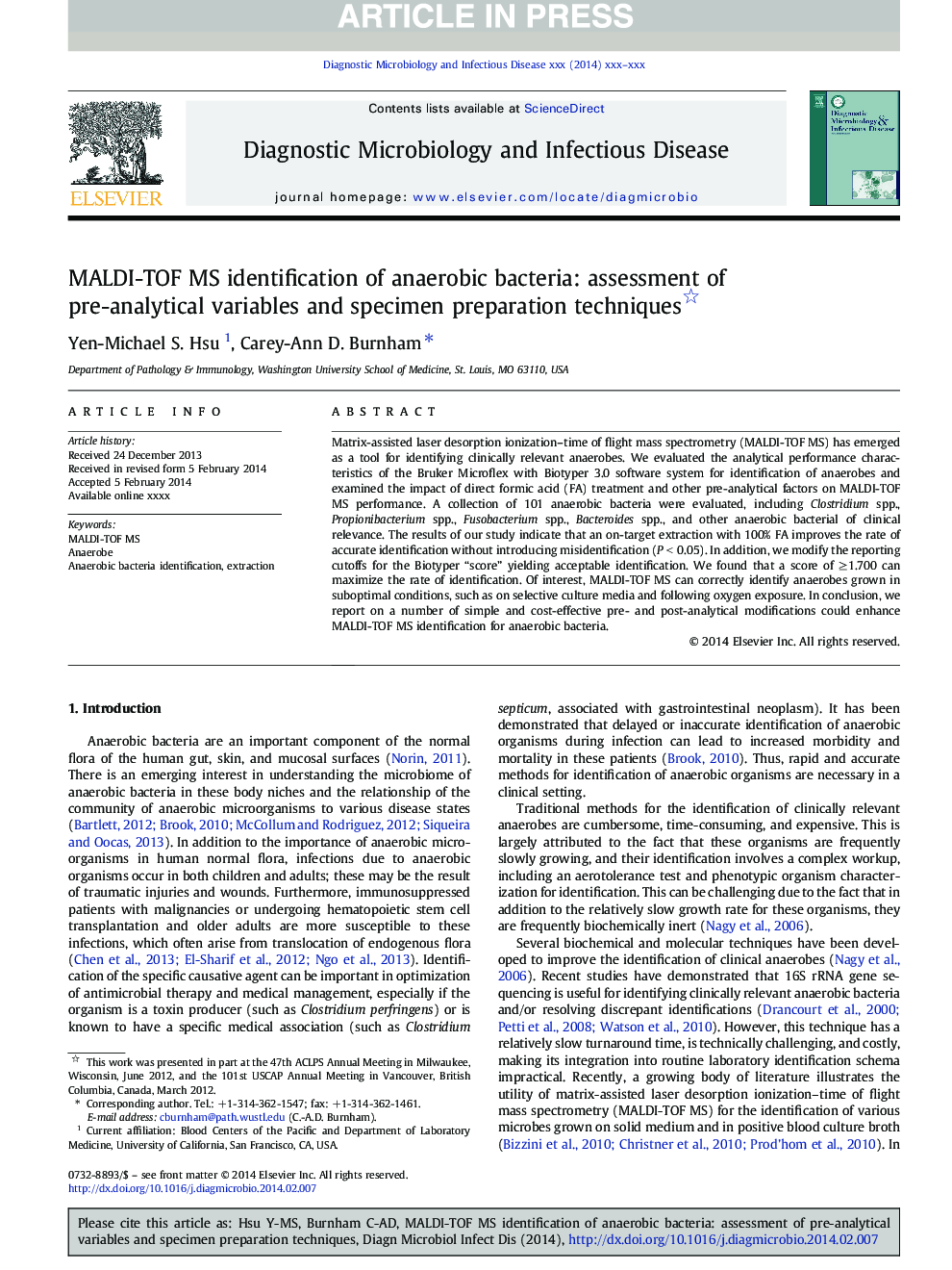| Article ID | Journal | Published Year | Pages | File Type |
|---|---|---|---|---|
| 6115816 | Diagnostic Microbiology and Infectious Disease | 2014 | 5 Pages |
Abstract
Matrix-assisted laser desorption ionization-time of flight mass spectrometry (MALDI-TOF MS) has emerged as a tool for identifying clinically relevant anaerobes. We evaluated the analytical performance characteristics of the Bruker Microflex with Biotyper 3.0 software system for identification of anaerobes and examined the impact of direct formic acid (FA) treatment and other pre-analytical factors on MALDI-TOF MS performance. A collection of 101 anaerobic bacteria were evaluated, including Clostridium spp., Propionibacterium spp., Fusobacterium spp., Bacteroides spp., and other anaerobic bacterial of clinical relevance. The results of our study indicate that an on-target extraction with 100% FA improves the rate of accurate identification without introducing misidentification (P < 0.05). In addition, we modify the reporting cutoffs for the Biotyper “score” yielding acceptable identification. We found that a score of â¥1.700 can maximize the rate of identification. Of interest, MALDI-TOF MS can correctly identify anaerobes grown in suboptimal conditions, such as on selective culture media and following oxygen exposure. In conclusion, we report on a number of simple and cost-effective pre- and post-analytical modifications could enhance MALDI-TOF MS identification for anaerobic bacteria.
Keywords
Related Topics
Life Sciences
Immunology and Microbiology
Applied Microbiology and Biotechnology
Authors
Yen-Michael S. Hsu, Carey-Ann D. Burnham,
